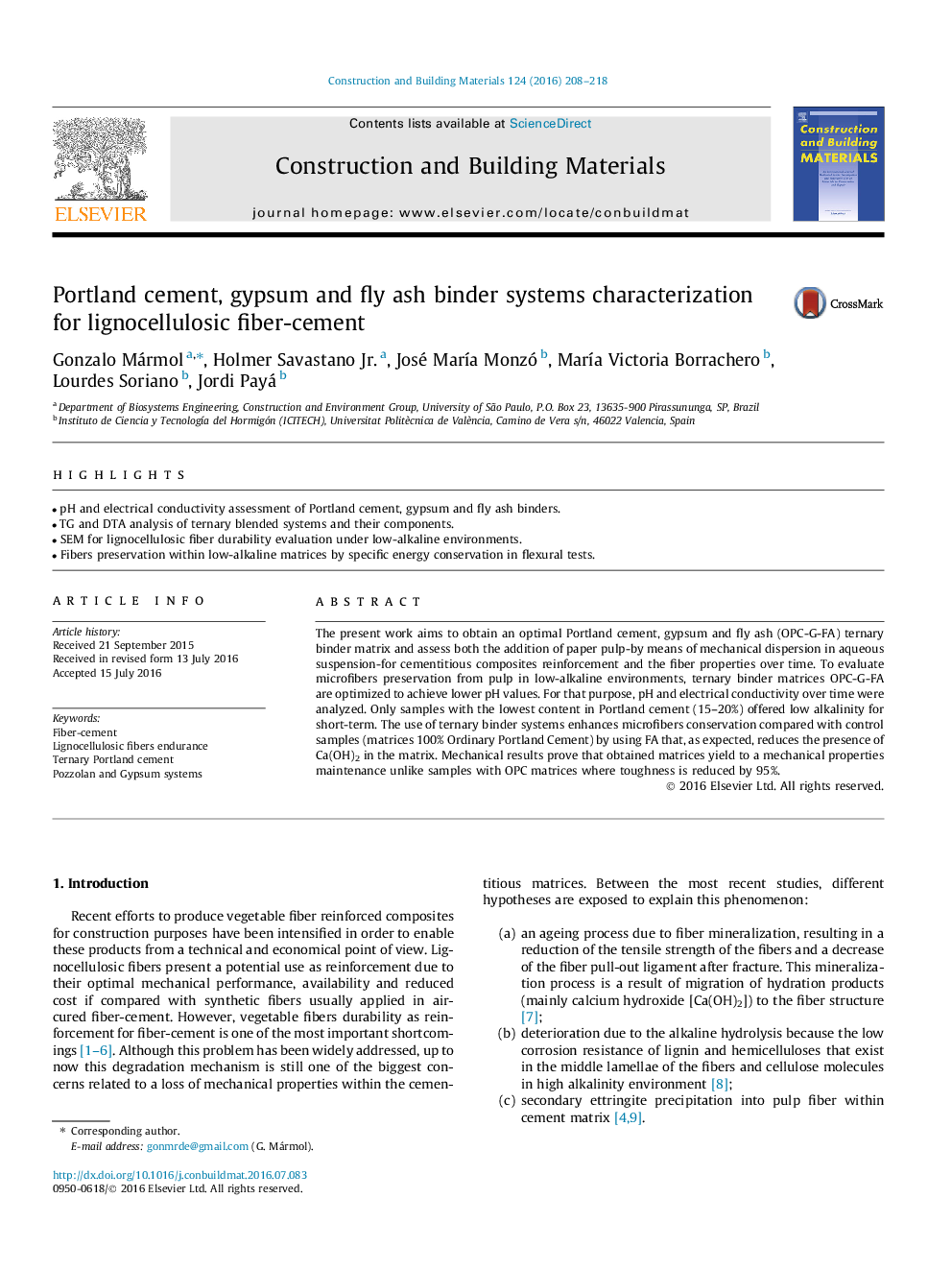| Article ID | Journal | Published Year | Pages | File Type |
|---|---|---|---|---|
| 255678 | Construction and Building Materials | 2016 | 11 Pages |
•pH and electrical conductivity assessment of Portland cement, gypsum and fly ash binders.•TG and DTA analysis of ternary blended systems and their components.•SEM for lignocellulosic fiber durability evaluation under low-alkaline environments.•Fibers preservation within low-alkaline matrices by specific energy conservation in flexural tests.
The present work aims to obtain an optimal Portland cement, gypsum and fly ash (OPC-G-FA) ternary binder matrix and assess both the addition of paper pulp-by means of mechanical dispersion in aqueous suspension-for cementitious composites reinforcement and the fiber properties over time. To evaluate microfibers preservation from pulp in low-alkaline environments, ternary binder matrices OPC-G-FA are optimized to achieve lower pH values. For that purpose, pH and electrical conductivity over time were analyzed. Only samples with the lowest content in Portland cement (15–20%) offered low alkalinity for short-term. The use of ternary binder systems enhances microfibers conservation compared with control samples (matrices 100% Ordinary Portland Cement) by using FA that, as expected, reduces the presence of Ca(OH)2 in the matrix. Mechanical results prove that obtained matrices yield to a mechanical properties maintenance unlike samples with OPC matrices where toughness is reduced by 95%.
